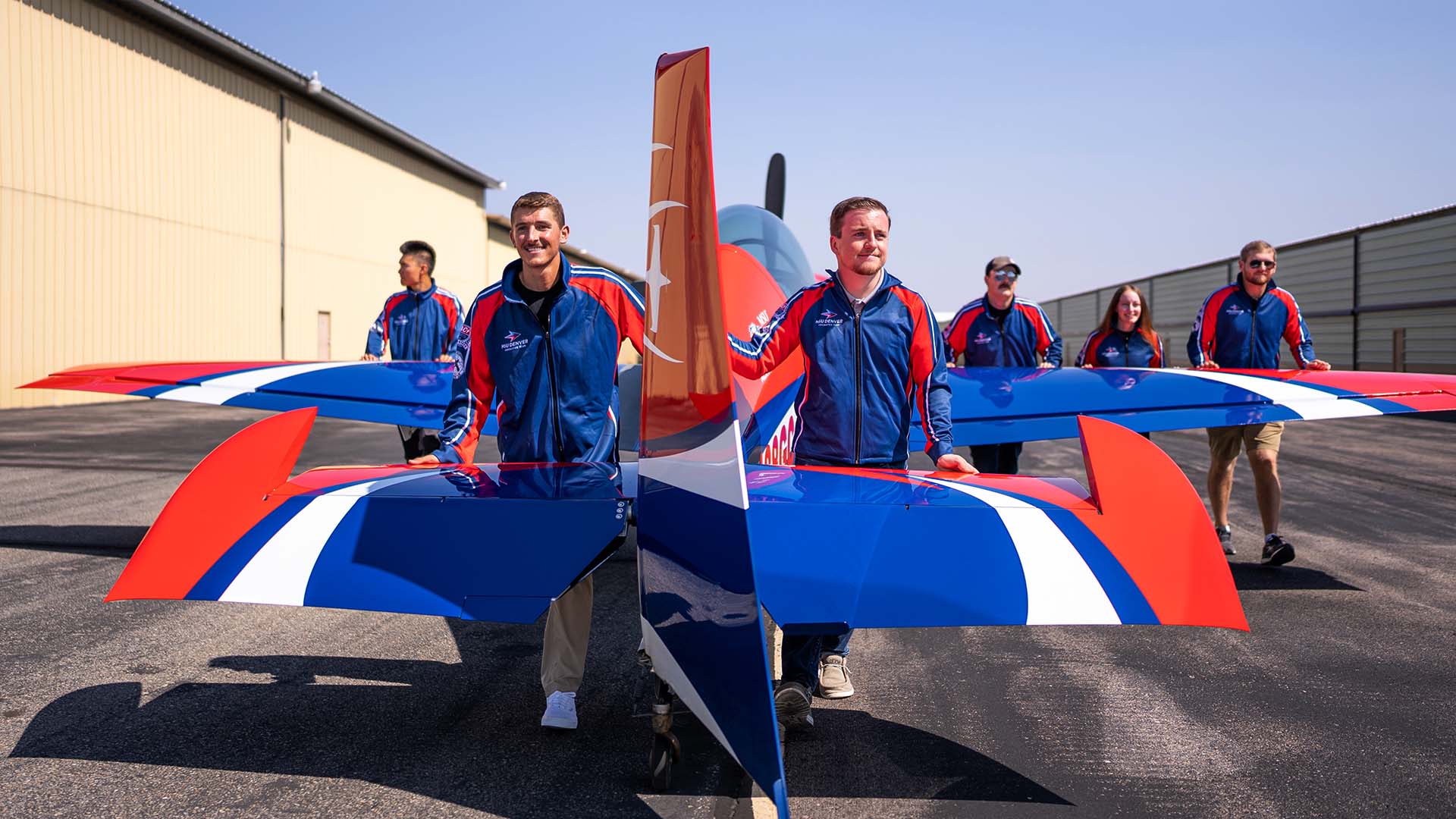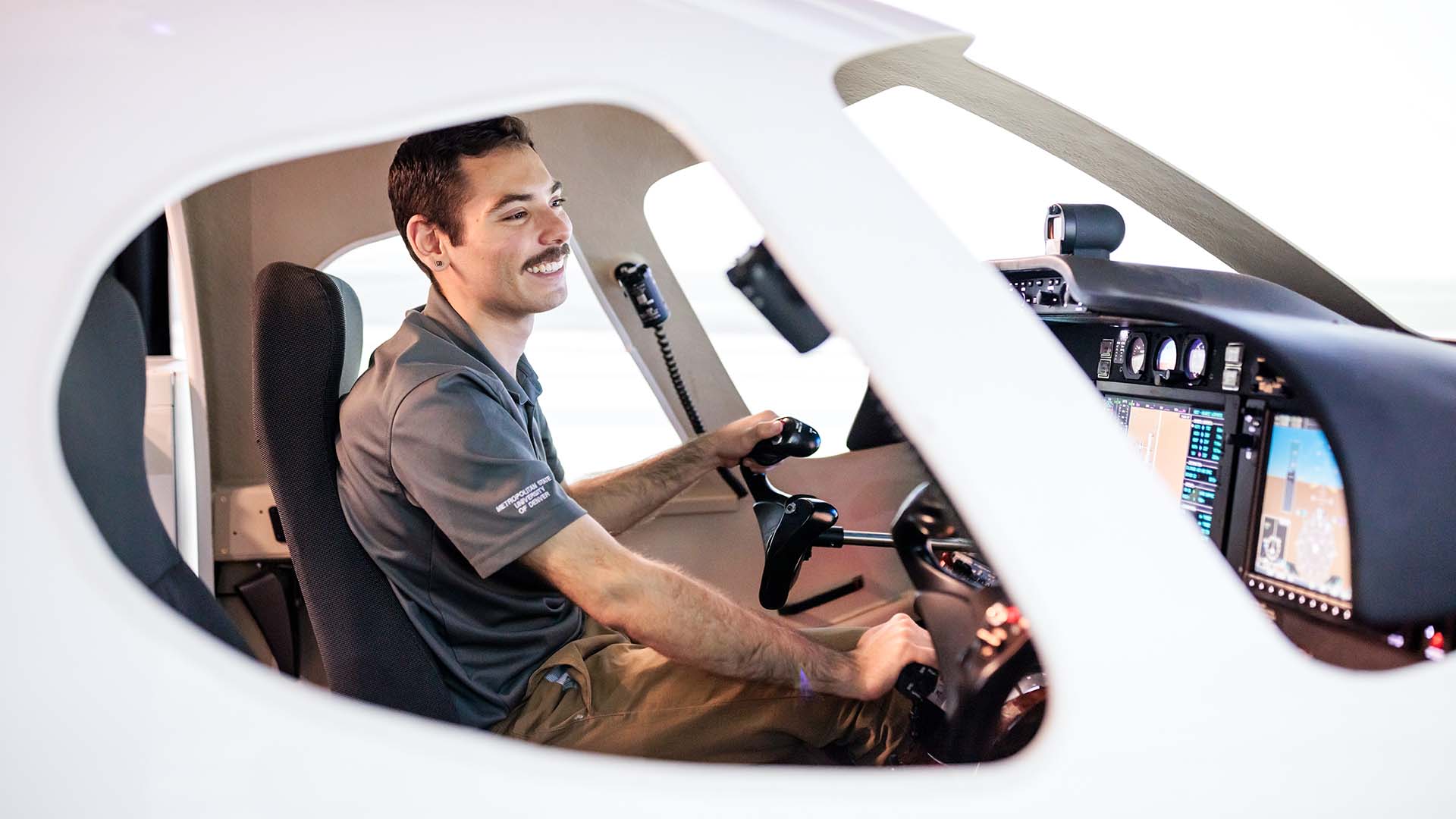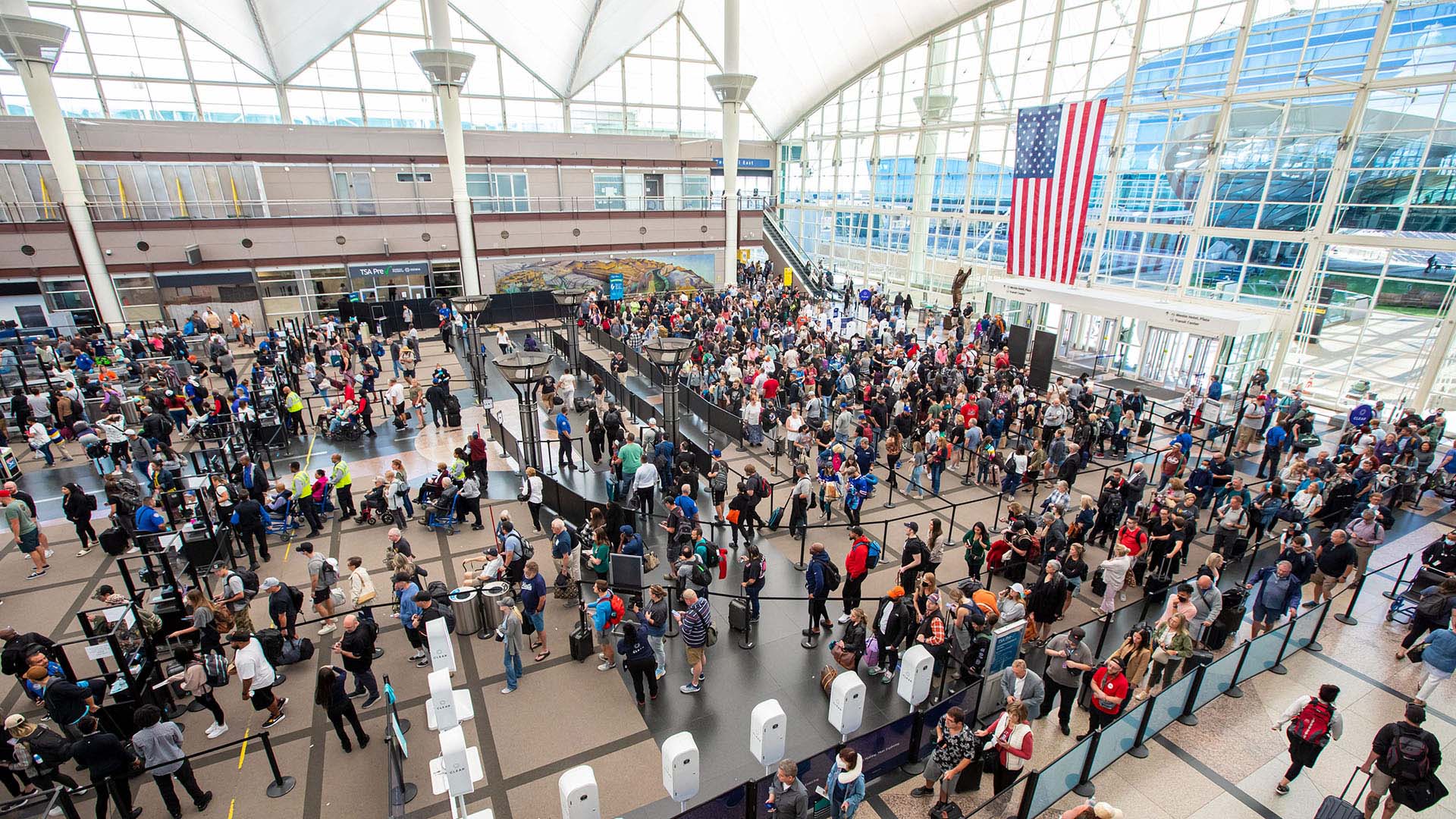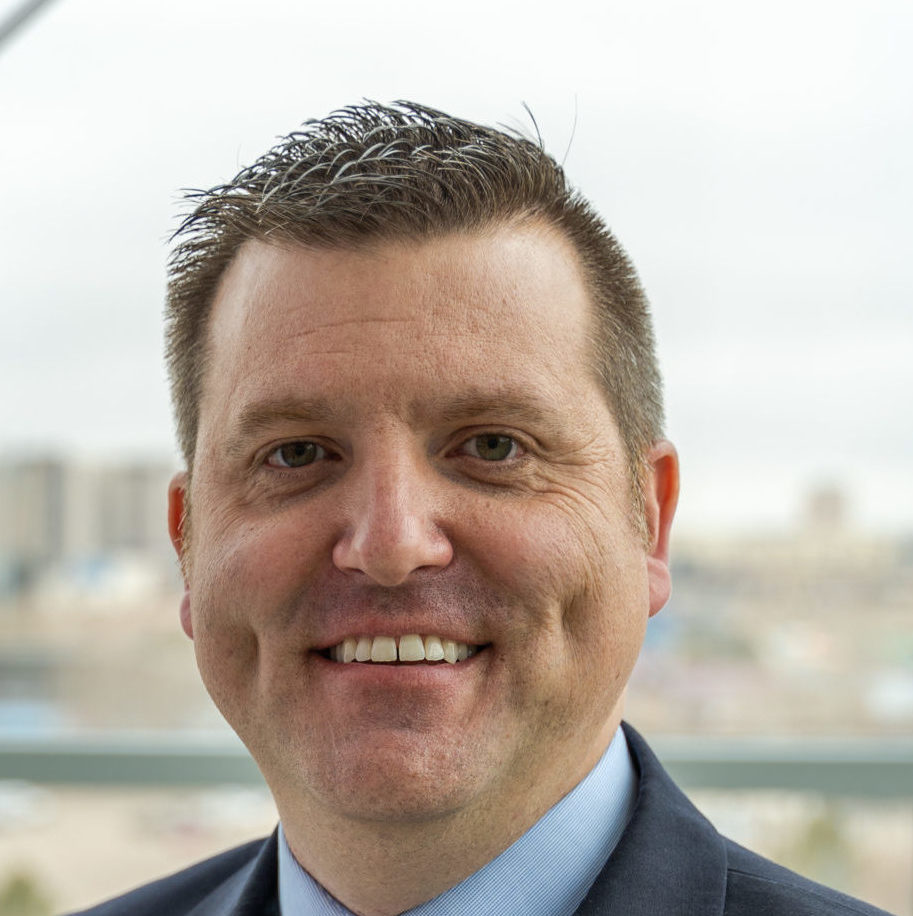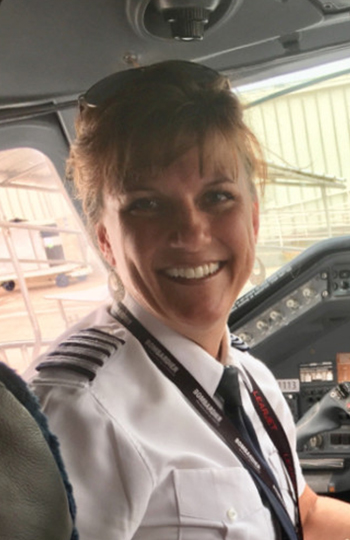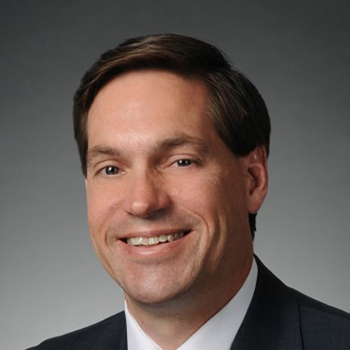Women pilots take flight
As global travel rebounds amid an aviator shortage, a new generation is poised to take its place in the cockpit.

When Luca Mueller decided to pursue her passion for aviation, she hadn’t considered gender dynamics. The ratio of men to women in flight school, in particular, was a shock.
“I felt pretty isolated, actually,” said Mueller, who just wrapped up the academic requirements for her Professional Flight Officer degree at Metropolitan State University of Denver this spring and is completing pilot training while looking for a job.
Even at MSU Denver, where the percentage of female flight students in the Aviation and Aerospace Science Department outpaces the national average, Mueller found the cohort in her flight curriculum to be a “hard community to break into.”
Mueller’s experience is one reason why the University’s Aviation program is committed to drawing more women students and faculty members, said Jeffrey Forrest, Ph.D., chair of MSU Denver’s Department of Aviation and Aerospace Science. The other is the need to train pilots to address the ongoing pilot shortage that he expects to be exacerbated as airlines recover rapidly from the pandemic downturn.
More than half a million new pilots are expected to be needed globally over the next 20 years, with a post-pandemic shortfall of 27,000 predicted for late 2021 alone.
“I expect an even more severe shortage by the end of the year than was previously predicted,” Forrest said.

Faculty focus
The population of women flight students at MSU Denver is 18%, according to the most recent enrollment data. Nationally, women make up less than 14% of students enrolled in aviation programs, according to the most recent statistics published by the professional organization Women in Aviation International.
One reason women’s enrollment at the University is on the rise is the the quality of women faculty Forrest has brought on board. Two such instructors are Aerospace Science lecturer Erika Armstrong, author of “A Chick in the Cockpit: My Life Up in the Air,” and Dagmar Kress, coach of the MSU Denver Aerobatic Team.
“Airlines already make an effort to recruit more women,” Forrest said, “but the demand, in turn, makes hiring female faculty more competitive.”
Kress taught Mueller’s first class at MSU Denver, which Mueller said was critical for her development in a male-dominated cohort.
WATCH: Meet Dagmar Kress, affiliate faculty coach of MSU Denver’s Aerobatics and Glider Club and Precision Flight Team
Mueller said she appreciated the experience that women instructors were able to convey because of their lives in aviation. It helped helped her understand the difference in pilot jobs that will be available to her.
Pioneering pilot
This June marks an important milestone for women aviators: The centennial of Bessie Coleman (1892-1926) becoming the first African American woman to earn an international pilot’s license. Texas-born Coleman had to move to France to learn to fly, but she returned to America where she flew in air shows and gave speeches encouraging African Americans and women to learn to fly. |
|
Armstrong, who flies commercially, said she tries to emphasize to students that the big airlines aren’t the only option. She said some women, in particular, are attracted to the growing sector of business aviation.
Kress stopped flying for eight years when her kids were young. Travel schedules are especially tough on moms who are airline pilots.
Local commuter airlines offer shorter hops, but pay and benefits are usually better at the big airlines, Kress added.
“Think of a plane to Australia,” Kress said. “A whole day there, a rest day or two and back – four days, just like that.”
As she prepares to enter the cockpit, Mueller said her dream job is “probably island-hopping, flying Gulfstreams on the side.” She’d happily go to work as an airline pilot, and she knows it’s a realistic goal thanks to her teachers and mentors and MSU Denver’s flight-simulation lab, which she said was a critical part of her education.
“(Faculty members) support the students and come to the classroom with a lot of life experience,” she said.
Leading by example
MSU Denver Aviation students in search of inspiration can also look to President Janine Davidson, Ph.D., who began her career as an Air Force officer and cargo pilot. She was a distinguished graduate of the Air Force Squadron Officer School and was the first woman to fly the Air Force’s tactical C-130.

“I was one of very few women in the whole country chosen for pilot training back then, so we’ve come a long way. But there’s still a long way to go, and I’m glad MSU Denver is leading on that front,” Davidson said.
Mueller’s experience as a woman in a cohort dominated by men inspired her to step into leadership as well. In 2019, she restarted the department’s student chapter of Women in Aviation International, serving as president. She also led projects such as a membership drive at MSU Denver’s Aviation and Aero Career Symposium in September 2019, where 50 more female students joined the club. In March 2020, she was one of 12 MSU Denver club officers who attended WAI’s International Women in Aviation Conference in Florida.
As she prepares to move into her career, club leadership is planning participation in future WAI Girls in Aviation Day events, in which girls ages 8 to 17 learn about careers in aviation, Mueller said. It’s part of a larger plan for the club to inspire and recruit women to the industry before they get to college. For instance, the club is developing a program wherein women aviation students visit the high schools they graduated from to talk to girls about a career in aviation.
“We want to let them know it’s really an option,” Mueller said.


